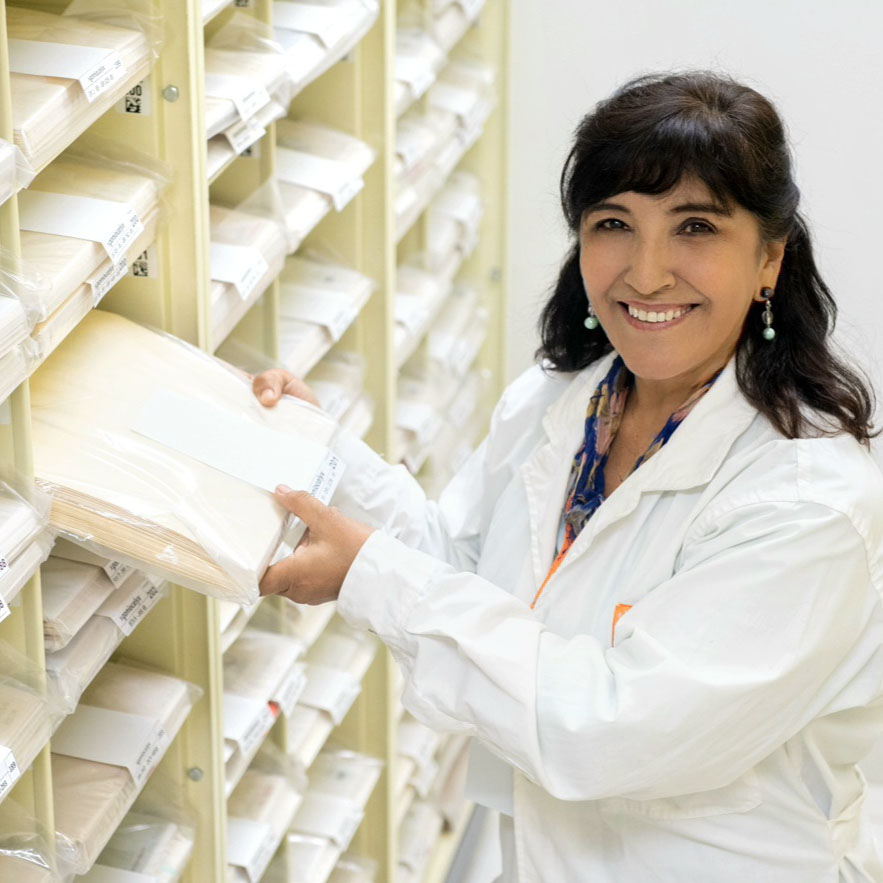Herbarium
Peru is considered the 10th most biodiverse country in the world and is the center of origin of several cultivated species including the Andean roots and tubers that CIP holds in its custody. The Genebank created in August 2001 an herbarium collection that preserves dried herbarium specimens from the wild and cultivated species, potato, sweet potato, and Andean Root and Tuber (ARTCs), corresponding to the accessions collected from the field as well as donations from scientific expeditions over the past 40 years of CIP’s institutional life. Herbarium specimens are a permanent record of a species, variety or population of these crops acquired over time which are invaluable because many of them were collected before their habitats disappeared due to population pressures affecting various flora and fauna in the world. They represent a snapshot in time, and thus, serve as permanent records of a species in each time and place. Taxonomic research involving the use of preserved specimens provide large amounts of data which can be accessed now and in the future. Potato has the most complete herbarium collection with more than 90% of the wild and cultivated species represented from southern Colorado Canyon in the United States to southern Chile.
Herbarium specimens are painstakingly prepared for long-term preservation and use. This process starts with the collection of representative flowering plant materials which are then carefully pressed, rapidly dried and then expertly permanently mounted on specialized papers by herbarium experts. These sheets are then stored in in polyethylene bags in specialized cabinets identified with the acronym of each species, under a systematic order of species and collector name. The herbarium has is environmentally controlled area with monitoring (24 hours a day) for temperature control (19-21C) and relative humidity (45-50%). Samples are periodically reviewed to ensure the maintenance of quality, cleanliness and the replacement of needed materials that can become worn over time (such as adhesive tape, changing pads, or cardboard). This review also serves to identify possible attacks by fungi and insect pests. In the case of insects, the specimens are placed in cold chamber at -20 ° C for two days to kill the insects and fungi. This type of maintenance has replaced the traditional use of mothballs which was highly toxic to human health. If not identified and controlled promptly, slow and sustained activity of these pests in the collection can be devastating. The occurrence of Liposcelis bostrychophilus (“Psocido”), Lasioderma serricorne (“beetle snuff”) and Lepisma saccharina (“silverfish”) can move from sample to sample, by drilling through the cardboard, liner and protective bag. Likewise, filamentous fungi can wreak havoc on samples, especially in particularly humid environments.



